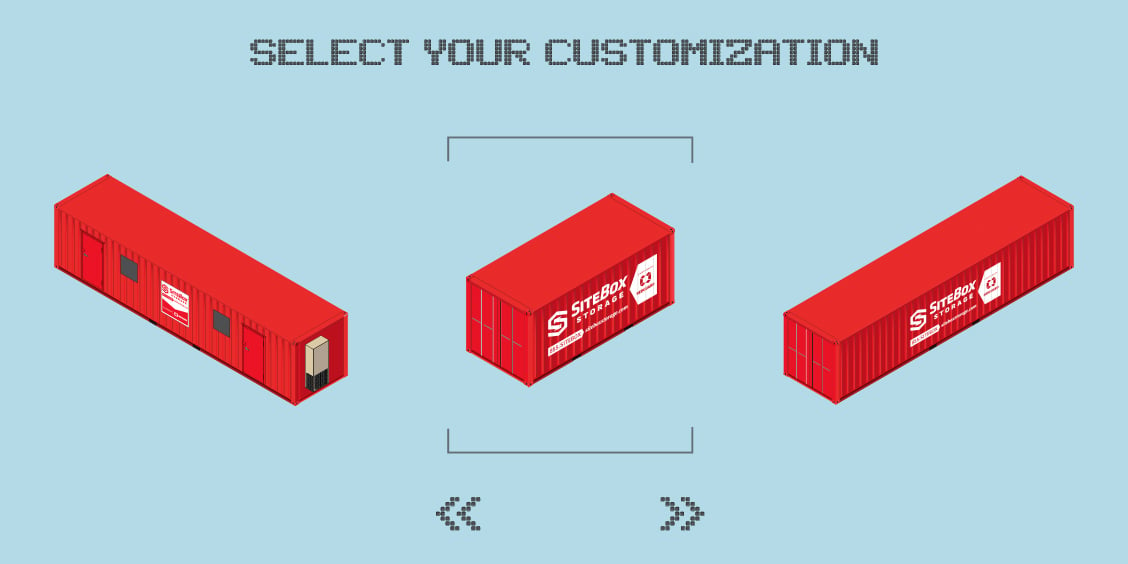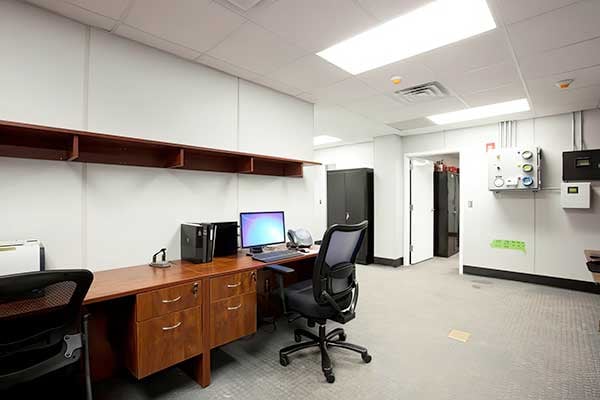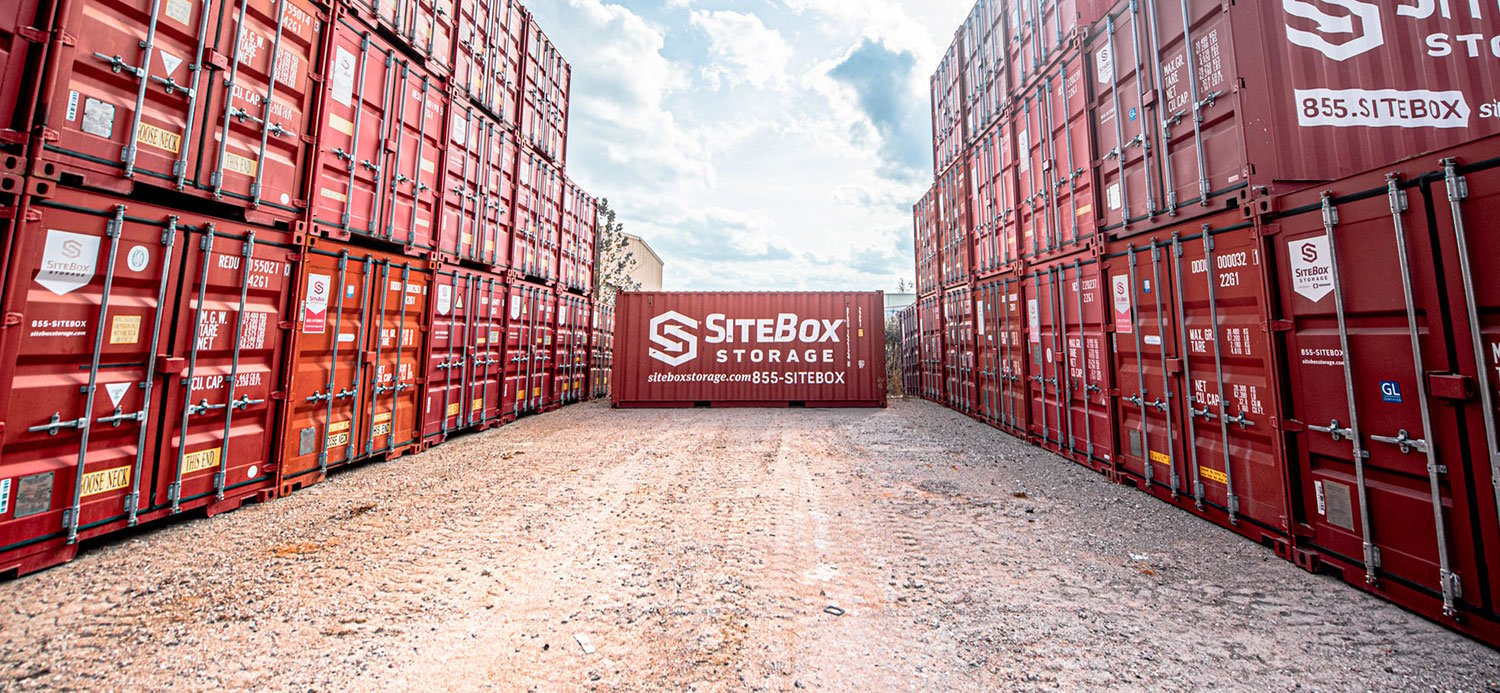Custom Shipping Containers Open a World of Possibilities

Secure onsite storage from cargo shipping containers has become incredibly popular on construction sites across the Midwest. These containers, sometimes called sea cans or conex boxes, work great right out of the box with no modifications needed in many cases.
Their robust steel construction and secure locking doors make them perfect for storing parts, supplies, and equipment. Just about anything needing storage can be housed in these mobile strongboxes at any location with a relatively flat yard.
But sometimes you need more than a plain box. That's where customization opens up possibilities most people never consider. Around 27.4% of global shipping containers get customized annually. These versatile units transform into offices, workshops, labs, data centers, and more.
Many units come preconfigured as office spaces, some combining office and storage all-in-one. They typically arrive with HVAC, electrical systems, communications capabilities, and windows with grates for natural light while maintaining security. Add planning tables and furniture, and you've got real workspace instead of running things from your truck dashboard.
Types of Customized Shipping Containers
The variety of custom shipping containers available is impressive. Each type serves different applications depending on what businesses need.
Standard modified storage containers add features like shelving systems, interior lighting, or ventilation. They're perfect for companies needing organized inventory space rather than just an empty box.

Mobile offices have become essential for construction sites and remote projects. These conversions provide fully functional workspaces with desks, climate control, and electrical outlets. Some include restrooms, eliminating separate portable facilities.
Portable laboratories represent some of the most interesting conversions, used for medical emergencies, soil and water testing, chemical mixing, and research. They come equipped with proper ventilation, climate control, and all requirements for safe lab work.
Guard shacks and security stations built from 20-foot containers give security personnel plenty of room with visibility windows, HVAC, and optional turnstiles for access control.
Workshop containers serve businesses and individuals needing dedicated project space. With proper insulation, electrical systems, and workbench installations, these become fully functional work areas.
The flexibility and adaptability of container modifications mean you're only limited by imagination and budget.
Design and Modification Options
Customization means getting exactly what you need. Design possibilities are extensive, whether starting with an open floor plan or choosing from popular made-to-order configurations.

Starting with a blank slate gives complete control. Companies like SiteBox modify containers with your exact specifications for layout, features, and functionality. This works when you've got unique requirements standard designs won't meet.
Popular modular designs offer proven floor plans customers request repeatedly. These tested layouts work well for common applications and can still be customized with specific touches.
Interior fast walls let you partition spaces however you want, creating separate areas within one container. Door and window additions transform how containers function. Personnel doors provide easier access for offices. Windows bring in natural light. You can add roll-up doors, glass entrance doors, or emergency exits.
Exterior modifications include paint colors matching your brand, logo placement, mounted equipment, and security features. Steel ramps make access easier on uneven surfaces.
The innovation in container conversion has created an entire industry focused on repurpose and eco-friendly solutions.
Materials Used for Custom Containers
Understanding what goes into these custom builds explains why they work so well.
The foundation is heavy gauge corrugated steel. This durable material handles weather, impacts, and years of use. Cargo containers were designed for harsh ocean transport, so they're built tough from the start.
Insulation gets added for climate control in offices and workshops. Spray foam insulation works well for container walls and ceilings, creating thermal barriers that keep interiors comfortable while improving energy efficiency.
Interior finishing materials depend on purpose. Offices might get drywall or paneling. Workshops might keep the industrial look. Labs need easy-to-clean surfaces meeting safety requirements. Flooring ranges from industrial rubber to vinyl to carpet.
Electrical components, plumbing materials, and HVAC equipment all meet standard building codes. Custom containers are legitimate structures built to proper specifications.
Windows and doors use commercial-grade materials for security and weather resistance. The combination creates structures with remarkable longevity, cargo containers lasting up to 35 years with proper customization extending that lifespan.
Applications and Uses
Custom shipping containers serve more purposes than most realize, with versatility making them popular across numerous industries.
Construction sites probably represent the most common application. Modified containers become site offices, tool storage, or combined office-storage units. Having everything onsite improves efficiency compared to driving to remote facilities.

Manufacturing facilities use custom containers for additional workspace, quality control labs, or secure storage. Mobility means relocating containers when production layouts change.
Retail businesses create pop-up shops, seasonal locations, and permanent retail spaces from customized containers. Some brands use them for distinctive storefronts that stand out and reinforce their image.
Educational institutions and research facilities use portable labs for field work, temporary classrooms, and equipment storage. Emergency response operations use modified containers as mobile command centers, equipment storage, or temporary medical facilities that deploy quickly.
Agricultural operations, security access control, and data centers all benefit from container modifications. About 39.8% of businesses using custom containers report increased storage efficiency, showing how these modifications solve real operational challenges.
Benefits of Custom Shipping Containers
Custom containers offer advantages traditional construction often can't match, explaining their growing popularity.
Cost-effectiveness tops most lists. Even with modifications, container conversions typically cost less than comparable traditional buildings. You're starting with a strong structure already built, paying mainly for modifications rather than building from scratch.
Speed beats traditional construction by wide margins. The average lead time for custom container production is just 18.3 days compared to months for conventional projects. When you need space quickly, containers deliver.
Mobility and flexibility provide options traditional buildings can't offer. Containers can relocate when necessary. Expanding? Add more containers. Downsizing? Remove or repurpose units. This adaptability helps businesses respond to changing requirements.
Durability comes built-in. These started as shipping containers designed to survive ocean crossings and decades of hard use. Proper customization maintains that toughness with minimal maintenance needed.
The eco-friendly aspect appeals to environmentally conscious businesses. Repurposing shipping containers gives them a second life instead of scrapping them, reducing waste and carbon footprint. It's practical sustainability.
Security is inherent in the design. Heavy steel construction, quality locks, and limited entry points make these difficult to breach. Customized containers reduce shipping damage by approximately 14.7% when used for transport, thanks to custom interior configurations securing contents better.
Insulation and Climate Control Features
Proper climate control separates functional custom containers from uncomfortable boxes. Getting this right makes all the difference for occupied spaces.
Insulation is the foundation. Spray foam insulation works particularly well for shipping containers because it seals completely and provides excellent thermal resistance. Applied to walls, ceiling, and sometimes floor, it creates an envelope keeping conditioned air inside while handling moisture control to prevent condensation.
HVAC systems maintain comfortable temperatures year-round. Smaller units might use PTACs, portable terminal air conditioning units similar to hotel rooms. These mount through the wall providing heating and cooling from one compact unit.

Larger containers use standard HVAC units mounted externally, keeping equipment accessible for maintenance. Twin units handle bigger spaces or provide redundancy for critical applications like data centers.
Ventilation prevents stuffiness and removes odors or fumes. Ventilation fans, vents, or air circulation systems get incorporated based on use. For portable labs, specialized ventilation handles chemical fumes safely.
Temperature control systems include thermostats for occupant control or remote monitoring for unmanned facilities where maintaining specific temperatures protects equipment. Proper insulation and climate control transform containers from metal boxes into comfortable, functional year-round spaces.
Security Enhancements
Security often drives the decision to choose custom containers. The inherent strength of steel construction provides a solid starting point that modifications can enhance further.
The basic container structure already offers significant security with heavy gauge steel walls, floor, and roof creating a tough barrier. Locking systems get upgraded in custom builds with commercial-grade hardware, pick-resistant locks, deadbolts, electronic locks, or card access systems depending on requirements.
Security windows balance visibility with protection. Windows with steel grates let in light while preventing entry. Some applications use impact-resistant glass or security film.

Exterior lighting, security alarm systems with door and window sensors, and surveillance cameras add layers of protection. Access control systems range from keypad entry to card readers or biometric systems for sensitive applications.
Fire safety features include smoke detectors, fire extinguishers, and sometimes exterior alarms. The combination of physical security from steel construction and enhanced security features makes custom containers excellent for protecting valuable assets.
Transportation and Delivery Considerations
Getting your custom container where it needs to go requires planning and proper equipment.
Transport requires specialized tilt-bed tractor-trailer rigs that tilt their bed to slide containers off. The driver positions the container at your site and levels it during placement.

Site preparation matters before delivery. The ground needs to be level and firm enough to support the container's weight. Many use gravel beds, concrete pads, or blocks as a foundation. The delivery truck needs room to maneuver with clear space to slide the container off.
Check height clearance for overhead obstacles like power lines, tree branches, or structures. For locations where direct truck access is impossible, crane services can lift and place containers. This adds cost but solves placement challenges.
Delivery scheduling should account for the average lead time of 18.3 days for custom container production, plus transit time. Over 62 companies worldwide specialize in custom container modifications, giving you sourcing options. Local providers often offer advantages in delivery costs and ongoing support.
Cost Factors and Pricing
Understanding what drives custom container costs helps with budgeting and making informed decisions.
The base container price varies by size and condition. A 10-foot container costs less than a 40-foot unit. New containers cost more than used ones. Customization complexity is the biggest cost variable. Basic modifications like shelving or lighting cost relatively little. Extensive builds with plumbing, HVAC, electrical, insulation, and interior finishing run much higher.
Size matters beyond base cost. Larger containers need more insulation, more HVAC capacity, more materials. Features and amenities add up, every window, door, outlet, and fixture increasing price. Quality of materials and finishes affects pricing, as does labor for customization work.
Delivery and placement costs depend on distance and site conditions. Local delivery costs less. Difficult sites requiring crane placement add expense.
Whether renting or purchasing affects finances. Rental spreads costs over time with ongoing monthly fees. Purchase requires more upfront investment but eliminates recurring charges. Lease-to-own offers middle ground.
Getting a detailed quote from providers gives accurate pricing for your specific requirements. The cost-effectiveness compared to traditional construction usually makes custom containers attractive even when prices seem high.
Choosing a Custom Container Provider
Selecting the right company to customize your container matters as much as the design itself.
Experience with shipping container modifications should top your evaluation criteria. Companies specializing in this work understand the unique aspects of container conversion and know what works.
Portfolio of past projects shows what a company can actually deliver. Look at previous work to see quality, design capabilities, and similar projects to yours. Customization capabilities vary between providers, so ensure potential companies can handle everything your project needs.
Customer service and support matter throughout and afterward. Responsive communication keeps projects on track. Ongoing support for questions or issues adds value. Companies focused on service make the whole experience better.
Pricing transparency, timeline reliability, and quality of work separate good providers from mediocre ones. Ask about materials used, whether work meets building codes, and warranties offered. Company reputation provides insight through reviews, references, and past customer experiences.
At SiteBox, we've been making portable offices and custom solutions since 1998. Our focus on customer service, safety, and quality has made us a trusted partner for businesses needing customized shipping containers that actually work.

When evaluating providers, trust your instincts along with facts. The company you choose becomes your partner in creating a custom solution, so find one that communicates well, understands your needs, and demonstrates they can deliver what you want.
Frequently Asked Questions
What are customized shipping containers? Customized shipping containers are standard cargo containers modified for specific purposes beyond basic storage. They can be converted into offices, workshops, labs, or other specialized spaces with added features like windows, doors, HVAC, electrical systems, and interior finishing.
How can I customize a shipping container? You can customize a container by working with specialized companies that handle modifications. Options include adding doors and windows, installing insulation and climate control, dividing interior space, adding plumbing and electrical systems, and finishing interiors to match your needs.
What sizes of custom containers are available? Custom containers typically come in 10-foot, 20-foot, and 40-foot lengths. All are 8 feet wide and 8.5 feet tall as standard. Some providers can create wider units or combine multiple containers for larger spaces.
How much do custom shipping containers cost? Costs vary widely based on size, modifications, and features. Basic modifications might add a few thousand dollars to the container cost, while extensive custom builds with plumbing, HVAC, and full interior finishing can cost significantly more. Get quotes from providers for accurate pricing.
Where can I buy custom shipping containers? Over 62 companies worldwide specialize in custom container modifications. Look for providers in your region, as local companies often offer better delivery costs and service. National companies like SiteBox serve multiple areas and can deliver to most locations.
Can shipping containers be modified for offices? Absolutely. Container offices are a popular customization. They can include windows, doors, HVAC, electrical outlets, interior walls, and even restrooms. Many businesses use them as site offices, remote workspaces, or permanent office buildings.
What materials are used in custom shipping containers? Custom containers start with heavy gauge steel construction. Modifications add materials like spray foam insulation, interior wall panels, flooring, commercial-grade windows and doors, electrical wiring, plumbing, and HVAC equipment. All materials meet building codes for safety.
How long does it take to customize a container? The average lead time for custom container production is 18.3 days, though complex builds may take longer. This includes design, modification work, and preparation for delivery. Simple modifications might be faster, while extensive custom builds need more time.
Are custom containers weatherproof? Yes. Shipping containers are designed to be weatherproof from the start. Proper customization maintains this by sealing any new openings like windows and doors with weatherstripping and using weather-resistant materials. Insulation also helps with temperature and moisture control.
Can I add windows and doors to a custom container? Definitely. Adding windows and doors is one of the most common customizations. Windows bring in natural light and improve the space. Personnel doors provide easier access than cargo doors. Both can be added wherever needed while maintaining the container's structural integrity.
If you need more information or would like to explore your options, give our friendly, experienced sales reps a call at the location nearest you.





